Michael Swanwick's Blog, page 133
May 13, 2015
Another Book You Need to Buy
.
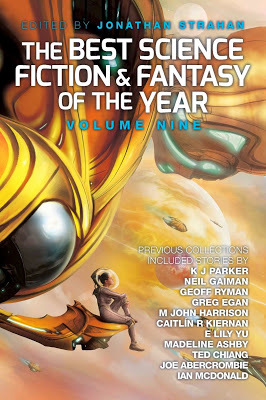
I'm in reprint again! Jonathan Strahan's latest, The Best Science Fiction and Fantasy of the Year: Vol 9 is fresh on the stands. And it contains... wait a second, I really do have to look it up... my own "Tawny Petticoats." This is the Darger & Surplus adventure originally published in George R. R. Martin's and Gardner Dozois' rather splendid anthology Rogues . It chronicles the two scoundrels' brief but eventful stay in New Orleans, a period during which they took on a third partner.
Here, in alphabetical order, are the contents:
Which I feel is sufficient reason for you to buy the book.
Remember: If at all possible, you should do so at an independent bookstore. The big chains do not hold readers or authors in high esteem. And don't get me started on Amazon.
*

I'm in reprint again! Jonathan Strahan's latest, The Best Science Fiction and Fantasy of the Year: Vol 9 is fresh on the stands. And it contains... wait a second, I really do have to look it up... my own "Tawny Petticoats." This is the Darger & Surplus adventure originally published in George R. R. Martin's and Gardner Dozois' rather splendid anthology Rogues . It chronicles the two scoundrels' brief but eventful stay in New Orleans, a period during which they took on a third partner.
Here, in alphabetical order, are the contents:
1. “Tough Times All Over”, Joe Abercrombie
2. “The Scrivener”, Eleanor Arnason
3. “Moriabe’s Children”, Paolo Bacigalupi
4. “Covenant”, Elizabeth Bear
5. “Slipping”, Lauren Beukes
6. “Ten Rules for Being an Intergalactic Smuggler (The Successful Kind)”, Holly Black
7. “Shadow Flock”, Greg Egan
8. “The Truth About Owls”, Amal El-Mohtar
9. “Cimmeria: From the Journal of Imaginary Anthropology”, Theodora Goss
10. “Cold Wind”, Nicola Griffith
11. “Someday”, James Patrick Kelly
12. “Interstate Love Song (Murder Ballad No.8)”, Caitlin R Kiernan
13. “Mothers, Lock Up Your Daughters Because They are Terrifying”, Alice Sola Kim
14. “Amicae Aeternum”, Ellen Klages
15. “Calligo Lane”, Ellen Klages
16. “The Lady and the Fox”, Kelly Link
17. “The Long Haul From the ANNALS OF TRANSPORTATION”, The Pacific Monthly, May 2009”, Ken Liu
18. “The Vaporization Enthalpy of a Peculiar Pakistani Family”, Usman T Mailk
19. “Four Days of Christmas”, Tim Maughan
20. “The Fifth Dragon”, Ian McDonald
21. “Shay Corsham Worsted”, Garth Nix
22. “I Met a Man Who Wasn’t There”, K. J. Parker
23. “Kheldyu”, Karl Schroeder
24. “Tawny Petticoats”, Michael Swanwick
25. “Grand Jeté (The Great Leap)”, Rachel Swirsky
26. “The Insects of Love”, Genevieve Valentine
27. “Collateral”, Peter Watts
28. “The Devil in America”, Kai Ashante Wilson
Which I feel is sufficient reason for you to buy the book.
Remember: If at all possible, you should do so at an independent bookstore. The big chains do not hold readers or authors in high esteem. And don't get me started on Amazon.
*
Published on May 13, 2015 07:29
May 12, 2015
A Brief Note to Young Writers of Science Fiction
.
Children, this is what science fiction used to look like. This is what it used to sound like. This was all a long, long time ago.
Your task is twofold:
1. You must write something as powerful as this.
2. You must write something much better than this.
With love,
Unca Mike
P. S. Keep it new, y'all!
*
Children, this is what science fiction used to look like. This is what it used to sound like. This was all a long, long time ago.
Your task is twofold:
1. You must write something as powerful as this.
2. You must write something much better than this.
With love,
Unca Mike
P. S. Keep it new, y'all!
*
Published on May 12, 2015 12:35
May 11, 2015
Let Me Write A Story About YOU...
.
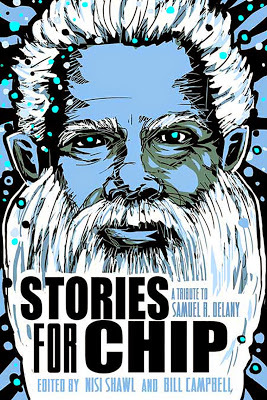
As the Indiegogo funding campaign for Stories For Chip moves into its last days, editors Nisi Shawl and Bill Campbell have unveiled more rewards for the well-heeled, including three bespoke short-short stories (or flash fictions, as they're called nowadays) written by me.
I'll explain what a bespoke story is in just a second. First, a little background:
Stories For Chip is a festschrift (a book of writings honoring a worthy individual while that person is still alive) celebrating the life and works of Samuel R. Delany, who commonly goes by the nickname "Chip." Chip is one of the best and most influential writers in the history of science fiction. He's also cut quite a swath in the circles of criticism and gay pornography. Anyone reading this blog probably knows quite a bit about the man.
Despite the title, the book contains a mixture of fiction and non-fiction. My own contribution is an essay titled, "On My First Reading of The Einstein Intersection." I also appear as a character in a reprint of Eileen Gunn's semitrue metafictional "Michael Swanwick and Samuel R. Delany at the Joyce Kilmer Service Area, March 2005." Here, in near-alphabetical order are all the other pieces:
So... bespoke fiction. Like bespoke shirts, bespoke fiction is custom-made to fit you. I've contributed up to three stories of roughly 500 words length, certainly no more than a thousand, based on information that the buyer provides about himself, herself, or a loved one. The buyer gets the original typescript, signed and dated by me. And I'll throw in the right to post it on your Web page, copy it into your Christmas letter, write it on the side of your barn -- and/or any other non-commercial use that may occur to you.
It's kind of like a Tuckerization, except without all the parts of the story that have nothing to do with You.
These are, I should mention, pricey little things. They're going for two hundred dollars a pop. But the money is going toward the creation of a book I devoutly wish to read, so I think it's all in a good cause.
You can find the site, order a copy of the book, maybe go for one of the many special donor perks here.
*

As the Indiegogo funding campaign for Stories For Chip moves into its last days, editors Nisi Shawl and Bill Campbell have unveiled more rewards for the well-heeled, including three bespoke short-short stories (or flash fictions, as they're called nowadays) written by me.
I'll explain what a bespoke story is in just a second. First, a little background:
Stories For Chip is a festschrift (a book of writings honoring a worthy individual while that person is still alive) celebrating the life and works of Samuel R. Delany, who commonly goes by the nickname "Chip." Chip is one of the best and most influential writers in the history of science fiction. He's also cut quite a swath in the circles of criticism and gay pornography. Anyone reading this blog probably knows quite a bit about the man.
Despite the title, the book contains a mixture of fiction and non-fiction. My own contribution is an essay titled, "On My First Reading of The Einstein Intersection." I also appear as a character in a reprint of Eileen Gunn's semitrue metafictional "Michael Swanwick and Samuel R. Delany at the Joyce Kilmer Service Area, March 2005." Here, in near-alphabetical order are all the other pieces:
Introduction by Kim Stanley RobinsonChristopher Brown – Festival
Chesya Burke – For Sale: Fantasy Coffin
Roz Clarke – Haunt-type Experience
Kathryn Cramer – Characters in the Margins of a Lost Notebook
Vincent Czyz – Hamlet’s Ghost Sighted in Frontenac, KS
Junot Díaz – Nilda
Geetanjali Dighe– The Last Dying Man
Timmel Duchamp – Real Mothers, a Faggot Uncle, and the Name of the Father: Samuel R. Delany’s Feminist Revisions of the Story of SF
Hal Duncan – An Idyll in Erewhyna
Fabio Fernandes – Eleven Stations
Jewelle Gomez – Be Three
Eileen Gunn – Michael Swanwick and Samuel R. Delany at the Joyce Kilmer Service Area, March 2005
Nick Harkaway – Billy Tumult
Ernest Hogan – Guerilla Mural of a Siren’s Song
Nalo Hopkinson & Nisi Shawl – Jamaica Ginger
Walidah Imarisha– Walking Science Fiction: Samuel Delany and Visionary Fiction
Alex Jennings – Heart of Brass
Tenea D. Johnson– Each Star a Sun to Invisible Planets
Ellen Kushner – Delany Story
Claude Lalumiere– Empathy Evolving as a Quantum of Eight-Dimensional Perception
Isiah Lavender – Delany Encounters
devorah major – Voice Prints
Haralambi Markov– Holding Hands with Monsters
Anil Menon – Clarity
Carmelo Rafala – Song for the Asking
Kit Reed – Kickenders
Benjamin Rosenbaum– The First Gate of Logic
Geoff Ryman – Capitalism in the 22nd Century
Alex Smith – Clones
Sheree Renee Thomas– River Clap Your Hands
Kai Ashante Wilson– Legendaire
So... bespoke fiction. Like bespoke shirts, bespoke fiction is custom-made to fit you. I've contributed up to three stories of roughly 500 words length, certainly no more than a thousand, based on information that the buyer provides about himself, herself, or a loved one. The buyer gets the original typescript, signed and dated by me. And I'll throw in the right to post it on your Web page, copy it into your Christmas letter, write it on the side of your barn -- and/or any other non-commercial use that may occur to you.
It's kind of like a Tuckerization, except without all the parts of the story that have nothing to do with You.
These are, I should mention, pricey little things. They're going for two hundred dollars a pop. But the money is going toward the creation of a book I devoutly wish to read, so I think it's all in a good cause.
You can find the site, order a copy of the book, maybe go for one of the many special donor perks here.
*
Published on May 11, 2015 07:53
May 8, 2015
A Greenhouse on Mars
.
So early yesterday, I took the train to D. C. for a SIGMA panel at the 2015 Humans to Mars Summit. The subject of the panel was what science fiction can do to promote the colonization of our sister planet. My fellow pundits were Catherine Asaro (moderator), Tom Ligon, Geoff Landis, and Mary Turzillo. You can judge how good a job we did, if you wish, by viewing the video above.
What I remember about my own words is how fundamentally optimistic I was. Asked for a justification for the colonization of Mars, I said that we didn't need one. I'd just returned from China which is still undergoing explosive growth, in the wake of which they created an ambitious space program. So far as I can tell, they never bothered to come up with a reason why. Great nations do great things. So of course they want to take the lead in space.
Two thoughts I had on the subject which the panel had no room for, however, were:
Any reimagining of the colonization of Mars will have to start with the people. So it's a pity that it seems unlikely that anybody thought to run a study of the volunteers for the Mars One project. Some of them never expected to go and merely signed up to get a closer look at something they found interesting. But there were a lot who really did hope to live the rest of their lives on another planet. Who were they? What did they want? What expectations did they have?
One thing I know is that they're going to live lives of very expensive poverty. For a very long time they will be unable to manufacture things like surgical instruments, birth control devices, guitar strings... the list goes on forever. All of which will be extraordinarily expensive to ship from one planet to another. I expect they'll make a lot of their own entertainment: Sing-alongs, amateur theatrics, and the like.
I expect the first Martian export will be poetry.
I want to see a greenhouse on Mars. If a colony is going to succeed, they'll have to grow their own food. It'll be heavy on vegetables at first. And it would help if there were extensive greenhouses in production by the time the colonists arrive.
Sooner or later NASA is going to have to run an experiment on Mars to see if a robot-assembled, remotely-tended greenhouse can raise viable crops on Martian regolith. When they do, it will be as good a means of promoting the exploration and colonization of the Red Planet as the rovers have been. I hope that in addition to the crops, they think to plant a small rosebush.
I want to be watching the camera footage when the first rose blossoms on another planet.
And afterward...
Catherine suggested we all go out to lunch together. Which made it ironic that somehow we managed to lose her before we did so. But we picked up Rosemary Smith, who very sensibly was at the summit to learn all she could on the subject, so we had a full quorum for some very lively conversation.
Geoff Landis, ever the engineer, pointed out that it would be every bit as informative and a lot cheaper to put a greenhouse on the Moon. Point taken.
*
So early yesterday, I took the train to D. C. for a SIGMA panel at the 2015 Humans to Mars Summit. The subject of the panel was what science fiction can do to promote the colonization of our sister planet. My fellow pundits were Catherine Asaro (moderator), Tom Ligon, Geoff Landis, and Mary Turzillo. You can judge how good a job we did, if you wish, by viewing the video above.
What I remember about my own words is how fundamentally optimistic I was. Asked for a justification for the colonization of Mars, I said that we didn't need one. I'd just returned from China which is still undergoing explosive growth, in the wake of which they created an ambitious space program. So far as I can tell, they never bothered to come up with a reason why. Great nations do great things. So of course they want to take the lead in space.
Two thoughts I had on the subject which the panel had no room for, however, were:
Any reimagining of the colonization of Mars will have to start with the people. So it's a pity that it seems unlikely that anybody thought to run a study of the volunteers for the Mars One project. Some of them never expected to go and merely signed up to get a closer look at something they found interesting. But there were a lot who really did hope to live the rest of their lives on another planet. Who were they? What did they want? What expectations did they have?
One thing I know is that they're going to live lives of very expensive poverty. For a very long time they will be unable to manufacture things like surgical instruments, birth control devices, guitar strings... the list goes on forever. All of which will be extraordinarily expensive to ship from one planet to another. I expect they'll make a lot of their own entertainment: Sing-alongs, amateur theatrics, and the like.
I expect the first Martian export will be poetry.
I want to see a greenhouse on Mars. If a colony is going to succeed, they'll have to grow their own food. It'll be heavy on vegetables at first. And it would help if there were extensive greenhouses in production by the time the colonists arrive.
Sooner or later NASA is going to have to run an experiment on Mars to see if a robot-assembled, remotely-tended greenhouse can raise viable crops on Martian regolith. When they do, it will be as good a means of promoting the exploration and colonization of the Red Planet as the rovers have been. I hope that in addition to the crops, they think to plant a small rosebush.
I want to be watching the camera footage when the first rose blossoms on another planet.
And afterward...
Catherine suggested we all go out to lunch together. Which made it ironic that somehow we managed to lose her before we did so. But we picked up Rosemary Smith, who very sensibly was at the summit to learn all she could on the subject, so we had a full quorum for some very lively conversation.
Geoff Landis, ever the engineer, pointed out that it would be every bit as informative and a lot cheaper to put a greenhouse on the Moon. Point taken.
*
Published on May 08, 2015 07:01
May 6, 2015
Hunting the Phoenix
.
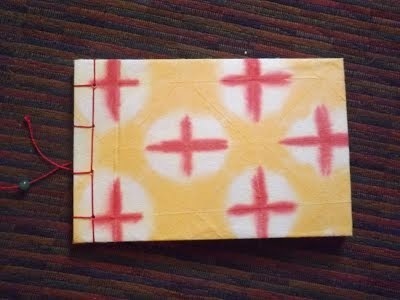
Here's something I would have sworn would not and would not occur in this universe. Dragonstairs Press, which is my wife Marianne Porter's self-styled "nanopress," has just published an art book. By, of all people, me.
A little background first. Dragonstairs is not, as many people have reasonably assumed, my own vanity press. It was created and is run entirely by Marianne. Nor is it a hobby. In large part because Marianne creates small-run, limited edition chapbooks, it's been a profit-making concern from the beginning. Her creations sell out quickly.
Marianne does have an advantage over most small-press publishers of having an author living in the same house whom she can direct to write something for her. As she did with Tumbling , a Lizzie O'Brien story written specifically because she had learned how to fold and cut a single sheet of paper into a small booklet and wanted something appropriate for it. Or as she did with the upcoming Universe Box , which... well, I'll let that be a surprise. But it's an extremely cool project.
The important thing to know here is that these projects arise in Marianne's brain. Hunting the Phoenix is an idea that I doubt would ever have occurred to me.
So what is Hunting the Phoenix?
You may recall that I have a novel coming out on August 1 from Tor Books. It's called Chasing the Phoenix and it's the second novel chronicling the adventures of Darger & Surplus, Postutopian con men extraordinaire. As I was writing the book, I used an iPad drawing app to make sketches of some of the characters and situations that were coming up. It was one of many means I used to coax my subconscious into giving up its treasures.
Marianne has taken those pictures and made of them a booklet. It's called Hunting the Phoenix because that was originally the working title for the novel, back before I discovered who or what the Phoenix would turn out to be. (There were a lot of candidates.) When I did make that discovery, it seemed obviously wrong to hunt such a creature, so I changed the present participle.
All the work was done by Marianne, save for an introduction which I wrote so my artist friends would not think I had completely lost my mind.
Here's the official website description:
You can find the Dragonstairs Press site here.
One third of the stab books, incidentally, sold out in the first day.
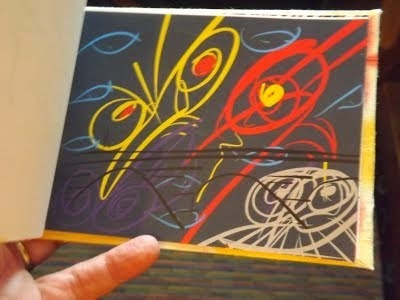
Above top: One of several covers. Above bottom: Demons.
*

Here's something I would have sworn would not and would not occur in this universe. Dragonstairs Press, which is my wife Marianne Porter's self-styled "nanopress," has just published an art book. By, of all people, me.
A little background first. Dragonstairs is not, as many people have reasonably assumed, my own vanity press. It was created and is run entirely by Marianne. Nor is it a hobby. In large part because Marianne creates small-run, limited edition chapbooks, it's been a profit-making concern from the beginning. Her creations sell out quickly.
Marianne does have an advantage over most small-press publishers of having an author living in the same house whom she can direct to write something for her. As she did with Tumbling , a Lizzie O'Brien story written specifically because she had learned how to fold and cut a single sheet of paper into a small booklet and wanted something appropriate for it. Or as she did with the upcoming Universe Box , which... well, I'll let that be a surprise. But it's an extremely cool project.
The important thing to know here is that these projects arise in Marianne's brain. Hunting the Phoenix is an idea that I doubt would ever have occurred to me.
So what is Hunting the Phoenix?
You may recall that I have a novel coming out on August 1 from Tor Books. It's called Chasing the Phoenix and it's the second novel chronicling the adventures of Darger & Surplus, Postutopian con men extraordinaire. As I was writing the book, I used an iPad drawing app to make sketches of some of the characters and situations that were coming up. It was one of many means I used to coax my subconscious into giving up its treasures.
Marianne has taken those pictures and made of them a booklet. It's called Hunting the Phoenix because that was originally the working title for the novel, back before I discovered who or what the Phoenix would turn out to be. (There were a lot of candidates.) When I did make that discovery, it seemed obviously wrong to hunt such a creature, so I changed the present participle.
All the work was done by Marianne, save for an introduction which I wrote so my artist friends would not think I had completely lost my mind.
Here's the official website description:
Hunting the Phoenix by Michael Swanwick. 6 1/2" by 4". Bound in archival board wrappers covered with hand-dyed rice paper, with a stab binding ornamented with a single aventurine bead. The contents include a text introduction by Michael Swanwick, and seventeen color illustrations, also by Swanwick, created originally on the iPad, as part of early planning for the novel, "Chasing the Phoenix". Illustrations include many of the major characters, and several incidents from the book.
Limited to 30 numbered copies, signed by the author, with 27 available for sale. $30 each, including shipping.
You can find the Dragonstairs Press site here.
One third of the stab books, incidentally, sold out in the first day.

Above top: One of several covers. Above bottom: Demons.
*
Published on May 06, 2015 06:55
May 4, 2015
Visiting Science Fiction World
.

After a tour of the offices -- ever the editor, Ellen Datlow was most impressed by the fact that, it being shipping day, there were cartons of books piled high everywhere, ready to go out to bookstores -- we were taken by editors Emily Wan and Fay Jing on a tour of the ancient town of Anren, including Liu’s Manor Museum and the Anren Jianchuan Museum Cluster.
The most heartwarming moment in all our time spent in China came when we were walking from the Flying Tigers Museum to the Modern Ceramics Museum and our paths crossed with a class of very young students -- kindergarteners, I think. Seeing Westerners in an area of China where we are a rarity, they all burst into huge smiles and waved excitedly and cried, "Hello! Hello! Hello!" Then, when they had passed us, they joyfully cried, "Goodbye! Goodbye! Goodbye!" Their teachers were smiling too, happy at this proof that the English they taught was being put to good use.
In the evening, several of the editors took us to the Laomatou Hot Pot Restaurant for the kind of delicious feast that Sichuan Province is world-famous for. There were, in the course of the evening, short impromptu speeches and toasts. But mostly we enjoyed good company, good conversation, and good feeling.
As I said, that day was the highlight of my stay. Better than the pandas? Better than Du Fu's cottage? I can't speak for the others, but for me -- yes.
The photograph above was taken that evening. From left to right: Deputy Editor-in-Chief Yang Feng, me, Jing Yanfei (Fay), John Berry, Eileen Gunn, Wan Jie (Emily), and Editor-in-Chief Yao Haijun.
Above: Photo by Ellen Datlow and used by her kind permission.
*

After a tour of the offices -- ever the editor, Ellen Datlow was most impressed by the fact that, it being shipping day, there were cartons of books piled high everywhere, ready to go out to bookstores -- we were taken by editors Emily Wan and Fay Jing on a tour of the ancient town of Anren, including Liu’s Manor Museum and the Anren Jianchuan Museum Cluster.
The most heartwarming moment in all our time spent in China came when we were walking from the Flying Tigers Museum to the Modern Ceramics Museum and our paths crossed with a class of very young students -- kindergarteners, I think. Seeing Westerners in an area of China where we are a rarity, they all burst into huge smiles and waved excitedly and cried, "Hello! Hello! Hello!" Then, when they had passed us, they joyfully cried, "Goodbye! Goodbye! Goodbye!" Their teachers were smiling too, happy at this proof that the English they taught was being put to good use.
In the evening, several of the editors took us to the Laomatou Hot Pot Restaurant for the kind of delicious feast that Sichuan Province is world-famous for. There were, in the course of the evening, short impromptu speeches and toasts. But mostly we enjoyed good company, good conversation, and good feeling.
As I said, that day was the highlight of my stay. Better than the pandas? Better than Du Fu's cottage? I can't speak for the others, but for me -- yes.
The photograph above was taken that evening. From left to right: Deputy Editor-in-Chief Yang Feng, me, Jing Yanfei (Fay), John Berry, Eileen Gunn, Wan Jie (Emily), and Editor-in-Chief Yao Haijun.
Above: Photo by Ellen Datlow and used by her kind permission.
*
Published on May 04, 2015 12:54
May 1, 2015
Goodbye, Mr. Chip
.
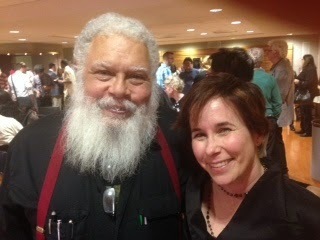
The other day Marianne and I went to Samuel R. Delany's retirement party at Temple University. Chip, as he is pretty much universally known, drew a large crowd of faculty, students, friends, and other well-wishers. Those from the local science fiction community who could make it included Gregory Frost, Fran Wilde, and Diane and Lee Weinstein. I'm probably leaving somebody out, for which I apologize.
Pictured above are Chip and Fran, whom I had just introduced. I have other, duller pictures of Chip at the event but I figured what the heck, I'd let Fran bask in the reflected glory. Now, of course, she has to spend the rest of her literary career living up to this association.
No pressure, Ms Wilde.
There were the usual short speeches, the joke presentation (of a tie), the serious presentation (of a pen), and then, after some preliminary remarks about his career, Delany read a chapter from his book Through the Valley of the Nest of Spiders. Chip is one of the finest readers in genre, whether that genre be science fiction or gay literature, so it was well worth the hearing.
Two things particularly moved me about the event. First was that before the reading, during the mix-and-mingle part of the event, Chip very carefully connected with everyone he knew personally, not just chatting them up but talking about them and their lives, in a way that let all of us know that he valued us as people. That was extraordinary for an event whose purpose was specifically to honor him.
The other thing was the students. I could not help seeing them -- the scowling young man working intensely upon his inscription in the guest book, the trio of young ladies looking as if they were about to break into nervous giggles -- as bundles of potential, early adults launching themselves upon the ocean of their lives. They were all so serious and hopeful. They knew that their lives had been touched by an extraordinary man and if they didn't quite know what they were going to do with this, they knew that eventually they would figure it out.
Or so I could not help speculate. Teachers live on through their students, much as writers live on through their books. It looked to me like Chip was leaving behind some good ones.
And now . . . ?
I have no idea what Chip is going to do next. But when I observed that now his time was his own, he involuntarily exclaimed, "What!?" So I'm guessing he's still going to be busy as busy.
*

The other day Marianne and I went to Samuel R. Delany's retirement party at Temple University. Chip, as he is pretty much universally known, drew a large crowd of faculty, students, friends, and other well-wishers. Those from the local science fiction community who could make it included Gregory Frost, Fran Wilde, and Diane and Lee Weinstein. I'm probably leaving somebody out, for which I apologize.
Pictured above are Chip and Fran, whom I had just introduced. I have other, duller pictures of Chip at the event but I figured what the heck, I'd let Fran bask in the reflected glory. Now, of course, she has to spend the rest of her literary career living up to this association.
No pressure, Ms Wilde.
There were the usual short speeches, the joke presentation (of a tie), the serious presentation (of a pen), and then, after some preliminary remarks about his career, Delany read a chapter from his book Through the Valley of the Nest of Spiders. Chip is one of the finest readers in genre, whether that genre be science fiction or gay literature, so it was well worth the hearing.
Two things particularly moved me about the event. First was that before the reading, during the mix-and-mingle part of the event, Chip very carefully connected with everyone he knew personally, not just chatting them up but talking about them and their lives, in a way that let all of us know that he valued us as people. That was extraordinary for an event whose purpose was specifically to honor him.
The other thing was the students. I could not help seeing them -- the scowling young man working intensely upon his inscription in the guest book, the trio of young ladies looking as if they were about to break into nervous giggles -- as bundles of potential, early adults launching themselves upon the ocean of their lives. They were all so serious and hopeful. They knew that their lives had been touched by an extraordinary man and if they didn't quite know what they were going to do with this, they knew that eventually they would figure it out.
Or so I could not help speculate. Teachers live on through their students, much as writers live on through their books. It looked to me like Chip was leaving behind some good ones.
And now . . . ?
I have no idea what Chip is going to do next. But when I observed that now his time was his own, he involuntarily exclaimed, "What!?" So I'm guessing he's still going to be busy as busy.
*
Published on May 01, 2015 06:24
April 30, 2015
Poets and Pandas in Chengdu
.

One week after the more-than-daylong return trip from China, the jet lag yet lingers. Which is why I didn't post this yesterday. But I have hopes of catching up across the board soon. Meanwhile...
Poets
Our group of six intrepid travelers (myself, Marianne, Ellen Datlow, Eileen Gunn, Eileen's husband John Berry, and Ellen's friend Claire) began our tour of China in Chengdu.
Chengdu is a wonderful place to visit, and if it weren't far to the west, just below the Himalayas, and in competition with all the rest of China, it would be flooded with foreign tourists. As it was, a group of six Americans was a major photo op for many of the locals. There was a lot to see and, even with a tour guide, we didn't around to half of it. But we did get to visit one of my favorite places in all China: the Thatched Cottage of Du Fu.
Du Fu was one of the two greatest poets of Chinese literature. (The other was Li Bai -- his friend.) He led a difficult and peripatetic life. Roughly 1,250 years ago, he lived for four years in a thatched cottage beside Flower Bathing Brook on what was then the outskirts of Chengdu. During that time, he wrote many of his greatest poems, including one about the cottage itself.

The cottage has been a tourist destination for over a thousand years. During that time, many great poets wrote major poems about the experience of visiting the cottage. Which was rebuilt, torn down, reconstructed, expanded to the size of a small palace (as befitted a poet of his stature) and then rebuilt into historians' best guess as to what it must have looked like and surrounded with the best gardens that Chinese landscaping could create. Which is saying a lot.
If I lived in Chengdu, I would go there every day, find a quiet place to sit, and write. Since I do not, I asked our guide to write Du Fu's name on a leaf I picked up from a walk. She did, I put it back, and then I took a photo of it.
And left it there.
Pandas
Chengdu is famed for many things. (Weavers have been making brocade there for at least two thousand years and have, as a result, achieved preeminence. Hence, one of its nicknames is Brocade City.) Currently, it's probably best known for its panda preserve.
The preserve is chiefly a place for the study of preservation of pandas. But it also serves as a zoo. It's a large and sprawling place with a denser population of pandas than you'll find anywhere else in the world. (Pandas are very territorial.)
The last time I was in Chengdu, I had the experience of holding a young panda on my lap. Alas, an outbreak of distemper closed down that option. But they were still well worth seeing. As witness the brief film below:
One of the many other pandas, Gong Zai, was the model animators used for inspiration when creating the movie Kung Fu Panda . This was a fact our guide was very careful to impart, and there was a certain amount of signage about this fact as well. Which just goes to show that Story is King. We were standing in the largest such facility in the world, an extraordinary place engaged on extraordinary work of great value... and its role in an animated film was being used to add luster to the experience.
If you want to be a big deal somewhere locally, write a story about it. Or, as Du Fu learned, a poem.
Above: Photo credit me. You should see the waterfall. And the koi.
*

One week after the more-than-daylong return trip from China, the jet lag yet lingers. Which is why I didn't post this yesterday. But I have hopes of catching up across the board soon. Meanwhile...
Poets
Our group of six intrepid travelers (myself, Marianne, Ellen Datlow, Eileen Gunn, Eileen's husband John Berry, and Ellen's friend Claire) began our tour of China in Chengdu.
Chengdu is a wonderful place to visit, and if it weren't far to the west, just below the Himalayas, and in competition with all the rest of China, it would be flooded with foreign tourists. As it was, a group of six Americans was a major photo op for many of the locals. There was a lot to see and, even with a tour guide, we didn't around to half of it. But we did get to visit one of my favorite places in all China: the Thatched Cottage of Du Fu.
Du Fu was one of the two greatest poets of Chinese literature. (The other was Li Bai -- his friend.) He led a difficult and peripatetic life. Roughly 1,250 years ago, he lived for four years in a thatched cottage beside Flower Bathing Brook on what was then the outskirts of Chengdu. During that time, he wrote many of his greatest poems, including one about the cottage itself.

The cottage has been a tourist destination for over a thousand years. During that time, many great poets wrote major poems about the experience of visiting the cottage. Which was rebuilt, torn down, reconstructed, expanded to the size of a small palace (as befitted a poet of his stature) and then rebuilt into historians' best guess as to what it must have looked like and surrounded with the best gardens that Chinese landscaping could create. Which is saying a lot.
If I lived in Chengdu, I would go there every day, find a quiet place to sit, and write. Since I do not, I asked our guide to write Du Fu's name on a leaf I picked up from a walk. She did, I put it back, and then I took a photo of it.
And left it there.
Pandas
Chengdu is famed for many things. (Weavers have been making brocade there for at least two thousand years and have, as a result, achieved preeminence. Hence, one of its nicknames is Brocade City.) Currently, it's probably best known for its panda preserve.
The preserve is chiefly a place for the study of preservation of pandas. But it also serves as a zoo. It's a large and sprawling place with a denser population of pandas than you'll find anywhere else in the world. (Pandas are very territorial.)
The last time I was in Chengdu, I had the experience of holding a young panda on my lap. Alas, an outbreak of distemper closed down that option. But they were still well worth seeing. As witness the brief film below:
One of the many other pandas, Gong Zai, was the model animators used for inspiration when creating the movie Kung Fu Panda . This was a fact our guide was very careful to impart, and there was a certain amount of signage about this fact as well. Which just goes to show that Story is King. We were standing in the largest such facility in the world, an extraordinary place engaged on extraordinary work of great value... and its role in an animated film was being used to add luster to the experience.
If you want to be a big deal somewhere locally, write a story about it. Or, as Du Fu learned, a poem.
Above: Photo credit me. You should see the waterfall. And the koi.
*
Published on April 30, 2015 06:56
April 27, 2015
Home from China
.

And did I walk upon the Great Wall?
Yes, children, I did.
I was on one of the restored/reconstructed sections, obviously. But it was still a moving experience and possibly the one single experience that the traveler to China must have or else regret missing forever. Samuel Johnson (did you know?) was among the many who yearned to see the Great Wall but could not. As James Boswell recorded:
The wall was, as you can probably tell from the photograph, thronged with tourists, almost all of them Chinese. The young bounded onward, pausing every now and then to take a selfie. The old clutched the rail, climbed a step at a time, and took frequent rests. Somewhere in between, I ascended through four guard houses, rising to the highest point visible from where I started. Occasionally, Chinese tourists would stop me with a request that I pose with them for a photo. Not, obviously, because I was so famous there that they recognized me but because anyone of non-Asian descent is in most parts of that country a sight worth seeing.
Halfway up my trek, a crowd almost stopped all forward passage. There were three young women, quite lovely and very dark-skinned, having their pictures taken. Tourists would thank them and leap back into the crowd, to be replaced by someone new wanting to record his or her glancing meeting with them. I had to admire their courtesy to utter strangers. They were remarkably good sports about a situation that must have happened to them quite a lot.
When I got to the furthest point in my excursion, I could see the wall stretching out ahead, down and then up again to the next mountain ridge and felt the urge to go on and on, deeper and deeper into China. But that wasn't practical. So instead -- and I realize this was whimsical of me, but we are all allowed our foibles now and then -- I clutched the cold stones of the wall, every one of them scratched with the names of visitors, overwhelmingly in Chinese. I stared out into the mountains and at the Great Wall stretching ahead of me. And I whispered to the unheeding air, "Sam, I am here."
And I've got a lot of catching up to do, so . . .
The Great Firewall of China is no joke. I could not update my blog during my journeys in China. So I'm going to be doing a series of posts retracing my steps across that great nation, starting this Wednesday with my return to Chengdu.
In between, if I can find the time, I'll be posting non-Chinese blogs. Just because there's a lot of stuff going on.
Stay tuned.
*

And did I walk upon the Great Wall?
Yes, children, I did.
I was on one of the restored/reconstructed sections, obviously. But it was still a moving experience and possibly the one single experience that the traveler to China must have or else regret missing forever. Samuel Johnson (did you know?) was among the many who yearned to see the Great Wall but could not. As James Boswell recorded:
“Johnson once talked with uncommon animation of traveling into distant countries; and that an acquisition of dignity of character was derived from it. He expressed a particular enthusiasm with respect to visiting the wall of China. I catched it for the moment, and said I really believed I should go and see the wall of China had I not children, of whom it was my duty to take care. ‘Sir, (said Johnson,) by doing so, you would do what would be of importance in raising your children to eminence. There would be a lustre reflected upon them from your spirit and curiosity. They would be at all times regarded as the children of a man who had gone to view the wall of China. I am serious, Sir.'”
The wall was, as you can probably tell from the photograph, thronged with tourists, almost all of them Chinese. The young bounded onward, pausing every now and then to take a selfie. The old clutched the rail, climbed a step at a time, and took frequent rests. Somewhere in between, I ascended through four guard houses, rising to the highest point visible from where I started. Occasionally, Chinese tourists would stop me with a request that I pose with them for a photo. Not, obviously, because I was so famous there that they recognized me but because anyone of non-Asian descent is in most parts of that country a sight worth seeing.
Halfway up my trek, a crowd almost stopped all forward passage. There were three young women, quite lovely and very dark-skinned, having their pictures taken. Tourists would thank them and leap back into the crowd, to be replaced by someone new wanting to record his or her glancing meeting with them. I had to admire their courtesy to utter strangers. They were remarkably good sports about a situation that must have happened to them quite a lot.
When I got to the furthest point in my excursion, I could see the wall stretching out ahead, down and then up again to the next mountain ridge and felt the urge to go on and on, deeper and deeper into China. But that wasn't practical. So instead -- and I realize this was whimsical of me, but we are all allowed our foibles now and then -- I clutched the cold stones of the wall, every one of them scratched with the names of visitors, overwhelmingly in Chinese. I stared out into the mountains and at the Great Wall stretching ahead of me. And I whispered to the unheeding air, "Sam, I am here."
And I've got a lot of catching up to do, so . . .
The Great Firewall of China is no joke. I could not update my blog during my journeys in China. So I'm going to be doing a series of posts retracing my steps across that great nation, starting this Wednesday with my return to Chengdu.
In between, if I can find the time, I'll be posting non-Chinese blogs. Just because there's a lot of stuff going on.
Stay tuned.
*
Published on April 27, 2015 06:32
April 3, 2015
Where's Michael?
.
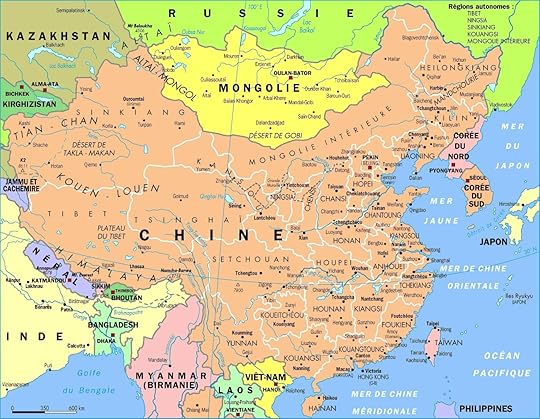
As always, I'm on the road again. This road trip, however, will be even more extroardinary than usual. Marianne and I will be spending almost three weeks in China with a group of friends that includes Ellen Datlow and Eileen Gunn.
Let me repeat that: China.
The next three weeks will either be a series of nightly or near-nightly exuberant posts on the wonders of that great land... or else a monotonous unchanging view of the map above, I don't know which. The Great Firewall of China is no myth. On my first visit I discovered that I could not even see this blog, much less update it.
But I think I have a work-around. I've got a son in the States and IF his email account is accessible and IF he has the time and remembers the passcodes AND the Sun and Moon and Planets all align... Then you can share my adventure with me.
Fingers crossed, guys!
*

As always, I'm on the road again. This road trip, however, will be even more extroardinary than usual. Marianne and I will be spending almost three weeks in China with a group of friends that includes Ellen Datlow and Eileen Gunn.
Let me repeat that: China.
The next three weeks will either be a series of nightly or near-nightly exuberant posts on the wonders of that great land... or else a monotonous unchanging view of the map above, I don't know which. The Great Firewall of China is no myth. On my first visit I discovered that I could not even see this blog, much less update it.
But I think I have a work-around. I've got a son in the States and IF his email account is accessible and IF he has the time and remembers the passcodes AND the Sun and Moon and Planets all align... Then you can share my adventure with me.
Fingers crossed, guys!
*
Published on April 03, 2015 07:04
Michael Swanwick's Blog
- Michael Swanwick's profile
- 546 followers
Michael Swanwick isn't a Goodreads Author
(yet),
but they
do have a blog,
so here are some recent posts imported from
their feed.



